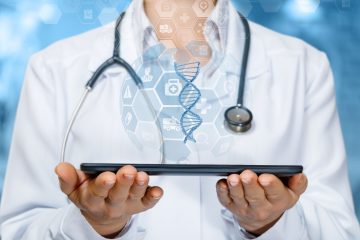
People. Processes. Technology. That’s the framework most often used by IT professionals to develop a holistic approach to digitally enabling systems to improve health and care. These elements are listed in priority order, an acknowledgement that the human components – people and processes – deserve primary attention.
In a recent series of 5 blogs (links below), I encouraged readers to get their organizations to define and then become a digital health system. I extolled the benefits of digital transformation and believe that any system that doesn’t will eventually wither or be acquired. That transformation – not easy – requires changes in planning horizons, mindset, and ultimately identity. As we’ve seen from our recent experiences with the pandemic, digital approaches redefine what it means to be a health system, to be a hospital, to provide ambulatory care. Without digital services such as telehealth to deliver care, without videoconferencing to manage the delivery of care, without apps and text to inform and coordinate care, the adverse impact of COVID-19 on our collective health would have been much worse.
Great benefits have come in response to the pandemic – many of them digitally enabled. IT shops around the company proved they were agile and flexible. Providers, payers (e.g., CMS), patients and their families demonstrated their flexibility and creativity. The definitions of workplace and workforce were expanded. The primary contributors were people and processes with technologies as the great enabler.
During the pandemic, the term mRNA has become as familiar as the term DNA. For those who may not have heard a definition, mRNA is an information delivery mechanism embedded in every cell of an organism. How is mRNA relevant to IT? When you think about today’s expanded health and care continuum, IT is an information delivery mechanism embedded in every “cell” of each participating organization – digital mRNA.
To be effective digital mRNA requires human participation. Every IT process and system is designed, built, and usually managed by humans. Augmented intelligence (AI) which sometimes performs better than its human counterparts requires human authors. Machine learning (ML) still needs a human prime mover to get started. Digital mRNA has inherent challenges. Human authors can unknowingly bring their biases into process and product development. Authors, designers, and builders of digital processes and technologies must learn to be self-aware. Individual and group bias must be addressed with input from a wide range of diverse sources during process and product design and build. As we have recently seen with remote schooling and telehealth, a particular challenge in process design is the digital divide. Innovations must address solutions for all participants whether partially or fully digitally enabled.
Finally, human factors are critically important in system security monitoring particularly true when it comes to security. The SolarWinds breach is a great use case for having a human observer in even the most reliable digital systems. All the efforts to digitally enable automated surveillance system weren’t enough to protect us. Even Einstein, the intrusion detection system heavily utilized by the US government to monitor their network gateways, didn’t detect the intrusion.
As Kevin Mandea, CEO of FireEye, told 60 Minutes, it was a FireEye security employee monitoring network traffic who noticed that another FireEye employee had two phones authenticated to the network. That anomaly caught by the eye of a human led to further investigation and discovery of the breach. One astute human observer was able to do what AI could not. Hurray for HUMANS!
So, what human elements are important to create and manage digital systems?
- Empathy – to avoid bias, consider all viewpoints, create an elegant, rewarding experience.
- Focus – to stay on point and not be distracted by the “shiny object.”
- Judgment – to consider a wide range of human experiences in the design process and to make the best decision for the greater good.
- Intuition – to understand the why of system design, implementation, support, and evolution.
- Creativity – to use stabilization to explore the newer, better way of doing things and pursue self-aware evolution.
To borrow from the Institute of Medicine’s six Aims, human elements are essential to creating a safe, timely, effective, efficient, equitable, and person-centered digitally enabled approach to health and care delivery.
Related Articles:
This blog is the 6th in a series. The first five are:
